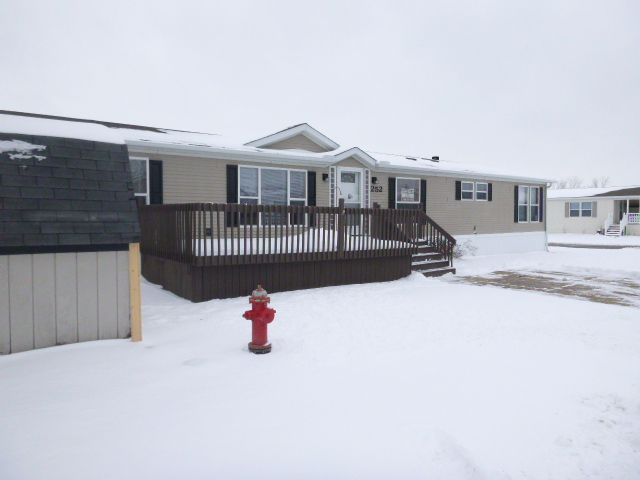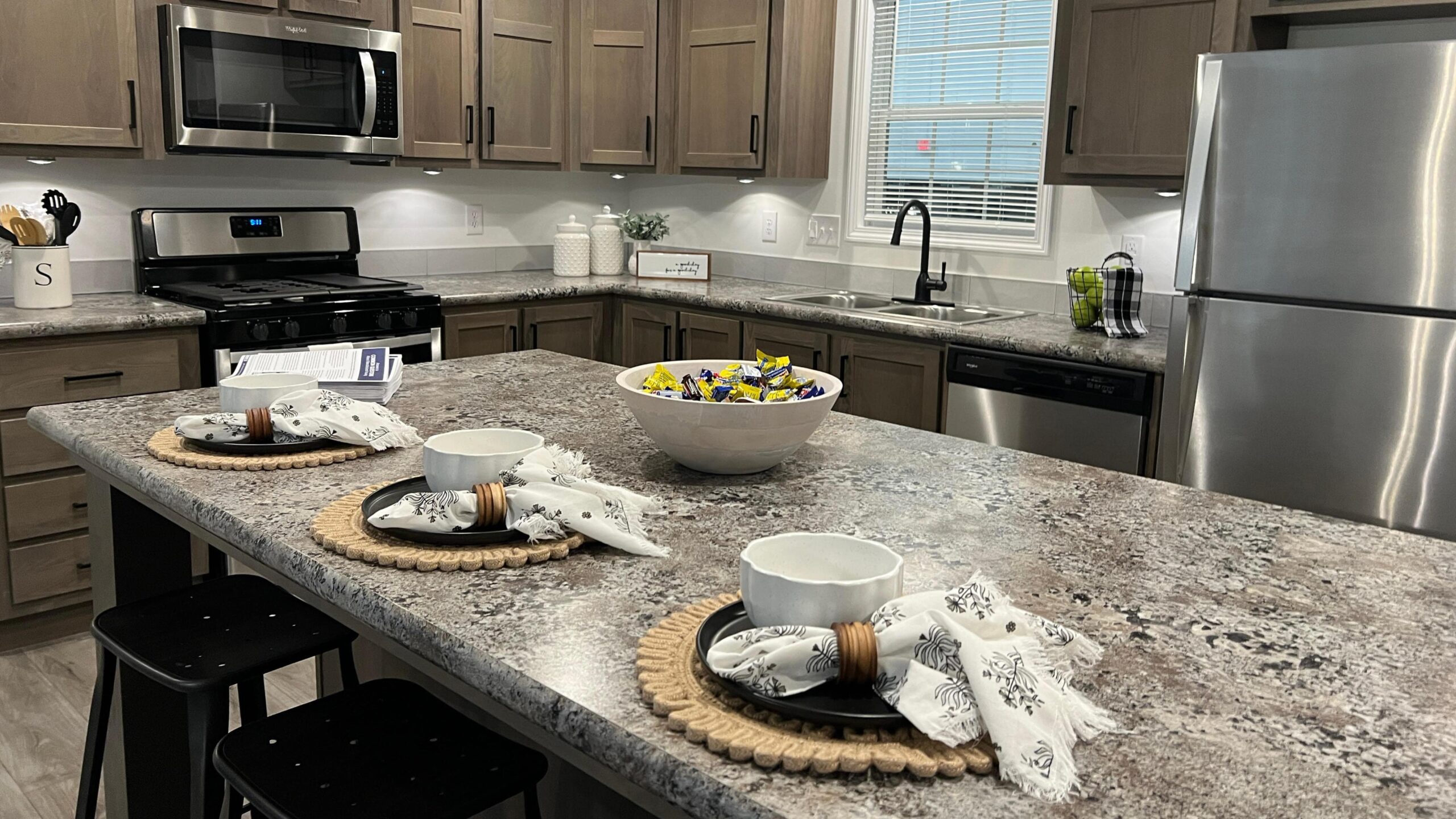Instructions for Dealing With Frozen Pipes In a Mobile Home
Some residents and homeowners are more susceptible than others to the travails of arctic cold air creating a problem with frozen water pipes. With much of the country under a deep freeze, now is a prime time for exactly that kind of calamity. We’re here to help.
Why is it more likely to have frozen pipes in a mobile home than with other types of homes?
Mobile homes sit above ground. They have a pocket of air between the foundation and the underside of the home. Dependent on what type of foundation you have, this will be more or less of a problem. For instance, a newer home on a frost-free foundation is unlikely to have problems. But, if there’s a rush of cold air, a cold air leak in your mobile home surrounds the plumbing. All kinds of homes can have problems with water pipes. However, avoidance of a frozen water pipe in a mobile home takes some special precautions and maintenance.
How should I be set up to avoid a frozen water pipe?
Skirting
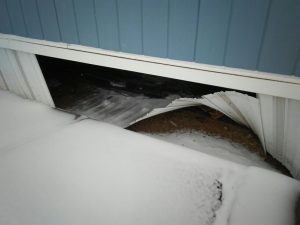
It is imperative that your mobile home skirting is completely secure around the home. It needs to be pinned in place at the proper intervals and void of structural compromises from lawn maintenance, vegetation overgrowth, soccer balls, previous home maintenance efforts, digging pets and varmints looking for shelter.
If there’s any opening in the skirting, that cold flow of air it allows to come under your home will make it difficult to maintain interior warmth. It also will freeze pipes under and potentially up into the home. One measure that could make a big difference, in terms of the integrity of the skirting and the draft it allows, is to purchase skirting that’s mid- to high-range in cost, and perhaps even one that’s insulated. This will help you control the interior temperature year-round, including during those cold months. If you can, spend a little more in the beginning to save a lot on plumbing later.
Underlayment
Under the home is an underlayment, which is a plastic vapor barrier often called an “underbelly” that fits snugly all along the underside of the home. It keeps moisture and pests out and the climate-controlled air inside where you want it. If there is a tear in the underlayment, moisture and cold air can flow in. That’s where some of the frozen water pipe issues can start. Underlayment should enclose a comprehensive sheet of insulation that maintains the division of climate-controlled air from the exterior elements.
Insulation
If the underlayment is compromised, the insulation might be as well. This work can be nasty. But, whether you’re getting your hands dirty or paying a contractor, you’ll want to ensure that the insulation under your mobile home is in good shape. Insulation needs to be laid out evenly and also needs to be dry.
One of our colleagues here at MHVillage had a previously owned home that he unfortunately came to find out had some water pipe damage. How did he discover this? The pipes froze, again, because — despite all the other safeguards — the existing insulation had been compromised during the previous “repair” and had not been replaced. So, when it turned cold again, the insulation allowed a flow of cold air that resulted in the pipe freezing again. OUCH.
Also, there is water pipe insulation available. It wraps around the pipe itself and keeps the water temperature more stable than would an exposed pipe. When it comes to the use of heat elements on the pipe, many manufacturers suggest covering the tape or cable with a section of pipe insulation. This keeps all of the energy from the tape or cable on the pipe.
Affiliate Link Below – MHVillage receives a small commission from the seller for purchases made through this link.
Climate Considerations
Now, we’re aware that it snowed in Florida these week, and pretty far south too. Overnight lows even in typically warm climes can cause water damage. But it is unlikely as long as the safeguards have been checked and assured. Those of us in the great white north are less fortunate. With overnight temperatures that can drop to 30-below zero, all the suggested safeguards still may not do the trick. One additional suggestion for winterizing your mobile home is to get a small, safe space heater that can be placed under the home. This will provide some warm air circulating in that closed space. It could be the key to prevent a morning of aggravation or a serious repair headache.
If, for whatever reason, you have all these checks in place and are still concerned, you can exercise the age-old trick of leaving a slight flow of water through the tap. Choose the furthest tap from the heat source, the one most likely to be associated with the compromised pipe. Flowing water is much more resistant to freezing. Also, having an open tap, even if just slightly more than a drip, provides an escape for the cold water vapor in the pipe, further removing your utility from harm’s way.
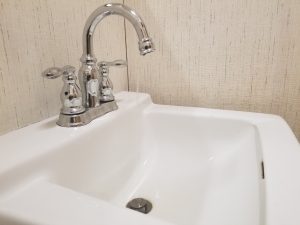
Ok, I have a frozen water pipe in my mobile home, what do I do?
First, we’re sorry this is happening. It is a pain. It takes time you don’t want to spend, and also, on a cold morning, you want that hot shower, right? So let’s get started.
Open the water tap. This allows the pressure in the pipe to release and reduces the likelihood of that frozen section causing the pipe to burst. If you have twin tap handles, as pictured, open both warm and cold water taps just
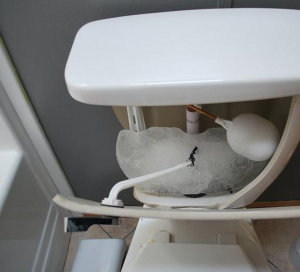
enough for a thin stream of water. The bursting pipe ultimately is what we’re trying to avoid here. If the frozen water pipe is the aggravation, a burst pipe and a call to the plumber is the serious repair headache.
Use one of those cool laser pointer temperature detectors if you have one. Run that light along your pipe. The frozen water pipe in a mobile home most likely is going to be near if not under the floor. It may also be closest to any compromise in the low wall or floor of the home. In other words, you could have an undetected draft that needs fixing.
Regardless, if the precise spot in the pipe is hard to find, you can use the temperature detector to get to that segment that drops near or below 32 degrees.
If you need to figure this out with your hands, you can trust your sense of touch to at least get close to the frozen pipe. We’ve also heard that cobwebs can indicate the location of an air leak. Let us know if this last tip comes to fruition — if so, we’ll mention you when we write about “spider hacks”.
OK, let’s pretend we’ve found the frozen section of pipe. Well done, friend!
How do I fix mobile home frozen pipes?
If you have easy access to the section of pipe that contains ice, there are several approaches.
- Point your space heater at it, particularly if the frozen water pipe in a mobile home is in a cabinet under a sink. It may take awhile, but warming ambient air in the cabinet will clear out the pipe.
- If you have one, use a heat lamp directed toward the frozen section. This will be a bit more effective than the floor space heater, and also can access harder-to-reach locations.
- A quicker solution could be to hold a hair dryer near the spot. It can get tiresome holding the hair dryer in one spot for 20 minutes, but what else are you going to do this morning
- Drape the pipe with a heating pad, particularly if the pipe is in an awkward, hard to reach spot.
- Purchase and place some heat tape or heat cable around or along the pipe.
- If you have some water you can boil, wrap the offending pipe with cloth/towels and pour hot water over the cloth, maybe repeatedly.
A couple of notes on these suggestions
For residents in a moderate climate, you may be accustomed to heating your entire home with a space heater or pellet stove. When the temperature dips below freezing, you may need to turn down those heat sources and turn on the central heat. The home’s central heat will warm the entire floor and the components within and under the home. Space heating and room heating is less comprehensive and could leave portions of your home more susceptible to freezing.
If you purchase heat tape or heat cable, follow the manufacturer’s instructions for use. Most tapes and cable can be used for either metal or plastic piping, but ensure this when you’re reading instructions before you buy. The tape or cable can be wrapped around the pipe, but be careful to avoid overlapping the tape. Heat tape heating heat tape (bear with me here) can cause a fire. And who cares about a frozen pipe if the house around it is ashy debris.
Properly used heat tape can remain in place year round and can serve as one of those precautionary measures we noted early in this writing. Also, if you’re up north, just leave the heat tape or cable plugged in during the warm months… it uses very little power, and many varieties have an auto-off feature temperatures above freezing. The real catch about unplugging the heating element used for preventative measures is that you may forget to plug back in before the snow flies, and there again, you are setting yourself up for the frozen water pipe in a mobile home.
About the environment
If you’re starting to get the dreaded “eco-guilt” about wasting water, we have a couple suggestions. Know that your sink can hold a container below the open tap to capture at least some of the draining water. You can make tea, water your plants, put it in the pet bowl or pour it into the freezer trays. Seriously, we’re trying to melt ice, but if the guilt is overwhelming, make some ice too. Balance, my friends, balance. Likewise, if you’re engaging the hot water on towels approach, you can use a bucket underneath to recapture some of that water. Reboil, re-use.
Thawing strategy for frozen water pipe in a mobile home
Whatever heat source you decide to use, focus your efforts “upstream” from the ice blockage. Warming the cold, but not yet frozen water on the mainline/water-source side of the frozen section of pipe will clear out the ice faster than trying to be right on top of it. You need to start the flow. If you mistakenly wrap the non-source side of the pipe “above” where the block is, you’re going to wait a while until the pipe heats up enough to work its warmth back to the frozen water.
Pour salt in the drain if that’s where the ice is. Then boil some salty water and pour it on top of the salt dam behind the ice. This should work quickly!
What not to do
OK, we covered how fire certainly will thaw a frozen water pipe. However, this route may be a bit of overkill. Let’s remember, fire causes injuries and also can burn down a house. So, do not use welding torches under a home or in a cabinet.


